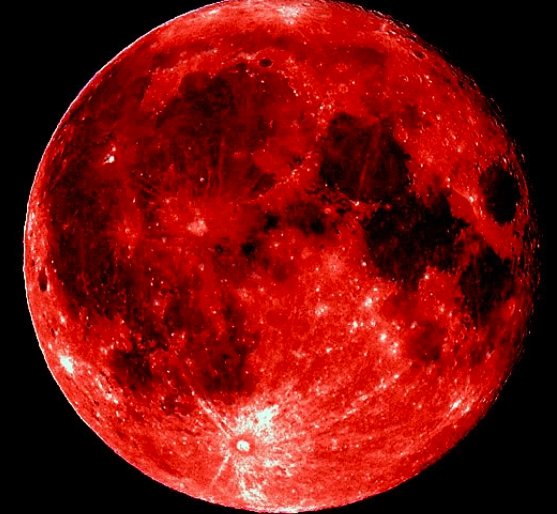A rare lunar eclipse set to bathe the skies in red this September is turning into something far more than an astronomical event — it’s shaping up to be a major tourism moment for Scotland and its global partners.
Cosmic Curtain Call Set for September 7
Mark your calendars: the night of Saturday, September 7, 2025, will feature one of nature’s most hauntingly beautiful performances. As the Earth’s shadow passes over the full moon, skywatchers will witness a deep red transformation — the Blood Moon.
This eclipse won’t be limited to just the UK. Spectators in France, Germany, Ireland, parts of Canada, and even Japan will also catch a glimpse. But Scotland? It’s being touted as one of the best spots on Earth for a clear, unspoiled view.
Skies here, especially in places like Galloway Forest Park or the Isle of Skye, are among the darkest in Europe. Less light pollution means a sharper, deeper view of the heavens — and this time, it could bring more than gasps.

Astrotourism Is Rising — And Scotland’s Ready
Stargazing’s having a bit of a moment.
And no, it’s not just for telescope nerds anymore. Sustainable travel trends have driven a growing interest in experiences that connect people with nature — and that includes the sky. Recent UK government data backs this up, showing surging demand for seasonal, rural, and astronomy-themed getaways.
One sentence, to give your brain a break.
In fact, the UK travel sector now contributes more than 4% to GDP, and there’s momentum behind efforts to spread that growth beyond crowded summer hotspots. Events like this eclipse? They’re perfect for that.
Scotland, with its mix of wide skies and rugged terrain, fits the bill like a glove. Tourism boards have caught on — and now they’re pairing sky events with local festivals, stargazing hikes, and late-summer getaways that give rural communities a boost.
Where to Watch the Moon Turn Red
So where’s best to see this lunar showstopper? Well, there’s no shortage of breathtaking spots.
From coastal cliffs to inland peaks, some Scottish locations stand out:
-
Luskentyre Beach, Outer Hebrides – Big sky, zero city glow
-
Ballageich Hill, near Glasgow – Close to the city but still clear
-
Conic Hill, Loch Lomond – Views, silence, and elevation
-
Galloway Forest Park, Dumfries and Galloway – A certified dark-sky haven
-
Isle of Skye, Highlands – A classic, and for good reason
These places aren’t just scenic—they’re practical. The moon will be low on the horizon when it enters shadow, which makes open, unlit locations ideal. And let’s be honest, these views aren’t half bad even without the Moon show.
One-liner for breathing space.
Local guides, hotels, and communities are gearing up, too. Expect eclipse-themed walks, viewing parties, and maybe even a few whisky-fueled astronomy nights.
Global Eyes on a Local Sky
This isn’t just a Scottish thing. France, Germany, Ireland, and Japan are all expected to get a good look at the eclipse too. In Canada, the eclipse will be partially visible in eastern provinces like Newfoundland and Nova Scotia — depending on timing.
But here’s where it gets interesting.
The global reach of this event is making Scotland a must-watch destination for astro-travelers. With direct flights from Paris, Berlin, Dublin, and Toronto, weekend getaways timed for the eclipse are suddenly within easy reach.
More than just sightseeing, countries like Japan — where lunar phases tie closely to traditional beliefs — are already planning cultural tie-ins. And back in Europe, Germany and France have invested in dark-sky parks to anchor rural tourism initiatives.
That puts Scotland in great company.
Economic Ripples Across the Highlands
The numbers aren’t small.
Studies following previous eclipses in France and Germany showed local businesses recording big spikes in revenue: hotel bookings up by double digits, restaurant takings up over weekends, and even retail surges in rural towns.
Here’s what a typical eclipse-driven weekend boost can look like:
| Sector | Estimated Uplift | Notes |
|---|---|---|
| Accommodation | +20–30% | Rural B&Bs see biggest gains |
| Food & Beverage | +15–25% | Especially local pubs & cafes |
| Guided Tours | +40% | Astronomy walks, night hikes |
| Retail & Souvenirs | +10–15% | Mostly in tourist towns |
The timing is gold, too. September often marks the seasonal dip after the summer surge. If local councils and VisitScotland play their cards right, the eclipse could bridge that gap — extending job hours, keeping cash flowing, and pushing the tourism calendar just a bit longer.
Not Just Science — It’s About Community, Too
There’s a cultural layer here that’s easy to miss.
It’s not just the spectacle — it’s the shared moment. The gathering. Kids staying up late. Neighbors watching quietly together in open fields. In towns like Stornoway and Dundee, community observatories are already planning public viewings, telescope stations, and even workshops for schools.
The eclipse offers:
-
A chance for intergenerational learning
-
Mental health benefits through awe and nature
-
Low-cost, high-impact cultural experiences
-
Inclusive engagement across rural and urban populations
Universities, science centers, and councils are getting involved. Some are organizing citizen science projects, while others are simply providing safe viewing tips and storytelling events.
It’s about wonder — but it’s also about belonging.
From Local Sky to Global Stage
So what does this all mean for Scotland?
A lot, actually.
The eclipse won’t last long — just a few hours. But the ripple effect could carry well into the next season. This isn’t just about filling hotel rooms; it’s about positioning Scotland as a serious player in astrotourism.
From the Hebrides to Highlands, there’s a moment coming. One that brings people together. One that makes them look up. And one that might, just maybe, shine a little new light on places that are usually seen in the dark.


















